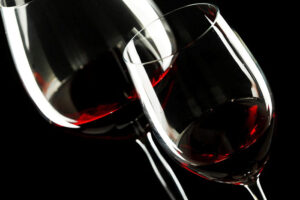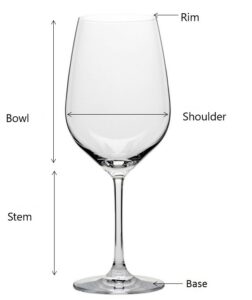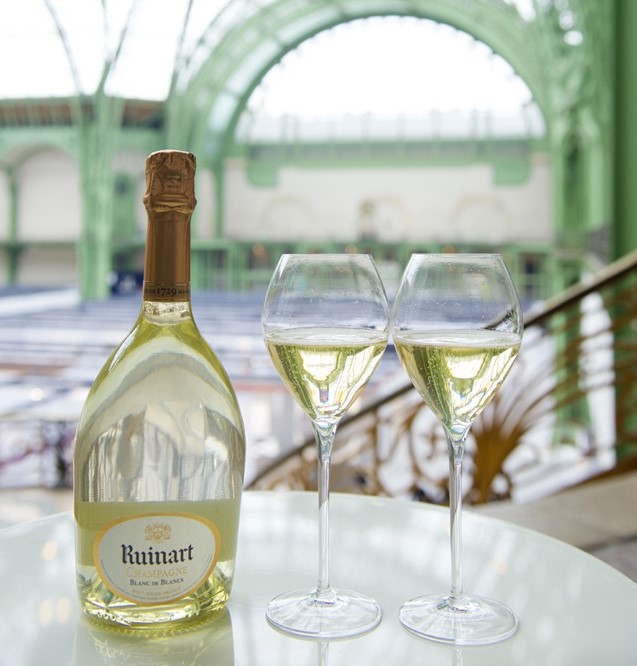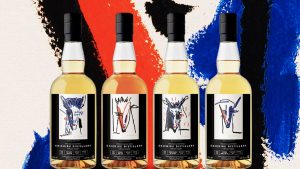
It’s something we have all had the misfortune to experience at one time or another: a fine wine served in an unsuitable glass that doesn’t remotely do it justice. The choice of wine glass has a significant effect on the taste experience. It can unlock flavours, heighten or reduce the sense of acidity or potency. We tell you everything you need to know about selecting the right glasses to get the best out of your wines.
A spot of history…
You have probably noticed that the glasses on your table or in restaurants keep on growing. Balloon glasses are a thing of the past and no one will miss them. There is no doubt that the shape plays a fundamental role when it comes to tasting.
One of the first to become aware of this was Claus Josef Riedel, the head of a glass-making dynasty and a major wine enthusiast. He realised that his favourite wines tasted different depending on the glass they were served in. So he completely revolutionised the family business, stopped making showy glasses and instead created a range of stemware designed for specific wines. And that’s where the modern Riedel story begins.
In a nutshell, the main factors to consider in a glass are: its capacity, its shape and the fineness of the rim.
Wine glass terminology

Wine reacts with air; it opens up. So it is important to opt for a glass with a large capacity (between 30 and 50ml). Don’t worry about the “empty glass” effect – the glass should only ever be filled up to the shoulder. The remaining space enables you to swirl the wine in the glass and aerate it.
Importance of the shape
Remember, a glass that is too small prevents the wine from breathing, in other words you won’t smell anything. But the shape is also all-important. The opening of the glass must be slightly narrowed so that the aromas become slightly concentrated for the taster.
Reds generally call for a glass that is broader in the shoulder to enable them to open up. More specifically, Burgundy Pinot Noirs and Barolos need a wide glass to bring out the very fine texture of the wine. And that’s why you wouldn’t want to serve a red from Domaine Roumier in a white wine glas or even a flute, for example.
Importance of the rim
It may seem surprising but the type of glass (crystal, crystalline etc.) has very little effect on taste perception. Don’t try plastic though… On the other hand the fineness of the rim, the part that the taster brings to his lips, plays a crucial role. The recommended thickness is slightly less than one millimetre. The idea is for the vessel, the glass, to go unnoticed so the taster can enjoy the wine itself to full effect.
The way you hold the glass also plays a vital part. It is important not to hold a glass by the bowl but by the stem. This is not just to avoid affecting the temperature of the wine, but also because, if you hold your glass by the bowl, your wine will be delivered to the back of your mouth. Now as you know, the various taste receptors (acidity, sweetness, saltiness, bitterness) are located in different places in the mouth. So in this case you would miss out on the majority of taste sensations. If, by contrast, you hold your glass by the stem, your wine is directed to the tip of your tongue and your tasting experience will be more complete. Then there’s the third option: to hold your glass by its base. In this case the wine goes under the tongue, and the acidity is emphasized. This method of tasting is very useful for professionals because it brings out the characteristics of the wine but is generally a less pleasurable experience than if the glass is held by the stem.
Guy Degrenne and sommelier Manuel Peyrondet have together developed a glass with a rim that is specially designed for sweet wines. The glass is tulip-shaped: it curves in on itself but with a rim that turns out. The idea is to “bypass” the sweet receptors at the tip of the tongue to reduce the sense of heaviness.
For champagne: flute or coupe?
 Photo credit Ruinart
Photo credit Ruinart
According to Frédéric Panaïotis, Ruinart’s chef de cave, we probably ought to be using…neither one nor the other. The coupe was very popular in the 19th and 20th centuries: a glass with a small capacity but a very broad shoulder (just like a cocktail glass). But then the flute took over, with its narrow shoulder and very tall bowl to allow you to observe the bubbles. That, too, is a complete failure: it looks attractive, but you can’t smell anything and can’t taste much either.
The top Champagnes are like wines – they need breadth to allow them to express themselves. A white wine glass may prove much more suitable. According to Frédéric Panaïotis, Champagne also needs height. Each bubble is packed with aromatic compounds that burst on the surface. So egg-shaped glasses with a medium capacity have now been developed, which are halfway between a white wine glass and a flute. They allow the wine to oxygenate and the bubbles to rise, and avoid the “empty glass” look which is not desirable in the case of champagne. This “rugby ball” shape is what Philippe Jamesse, head sommelier at Les Crayères restaurant, recommends. He has developed his own range of glasses and his way of thinking has really caught on now.
The iDealwine shopping list
So while glasses from Riedel, Spiegelau, Philippe Jamesse and Zalto rank as the ultimate in glassware, Schott Zwiesel, Chef & Sommelier, and more recently Guy Degrenne have also brought out high-performing glasses tailored for different uses at a (slightly) more accessible price.
However, there are not many enthusiasts who have the space at home to house as many glasses as there are grape varieties… The rules mentioned above – choose a glass that has a decent capacity, with a medium shoulder for whites and a slightly broader shoulder for reds and a very fine lip – should be enough to enable you enjoy your wine to the full.
Three types of glass should be enough to cover all your requirements:
- A general-purpose glass for whites
- A red wine glass (Bordeaux tulip glass or Burgundy balloon glass according to your preference)
- A Champagne glass (rugby ball shape).
Cheers!
Shop all wines currently on sale on iDealwine
Register to start buying or bidding
Search for the price estimate of a wine




The detailed explanations on how different glass shapes can enhance the flavors and aromas of various wines were particularly enlightening. It’s clear that you’ve put a lot of thought into understanding the nuances of wine tasting, and your tips on selecting the appropriate glassware will undoubtedly help readers elevate their wine-drinking experience. Great job!
I thoroughly enjoyed the article. The detailed insights into how different glass shapes can enhance the flavor and aroma of various wines were both enlightening and practical. It beautifully highlighted the subtle art of wine tasting and demonstrated how selecting the appropriate glass can significantly elevate the overall experience. This piece is a must-read for both novice wine enthusiasts and seasoned connoisseurs alike.